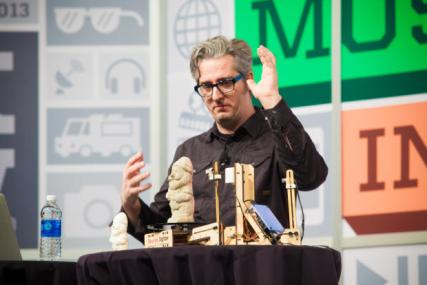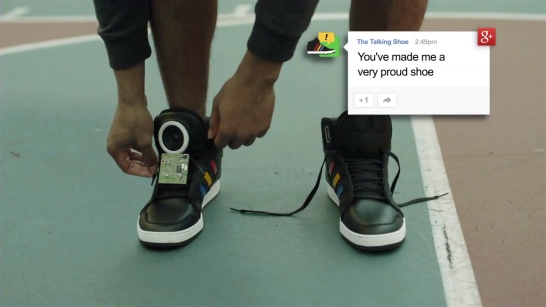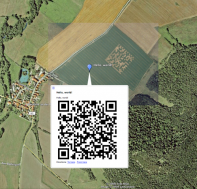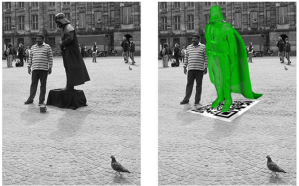The focus, particularly for the media, at this annual five day festival (10 days if you include the music aspect) which takes place in Austin, Texas has primarily been on what “the next big thing” is likely to be. Twitter was launched at SXSW in 2007 and Foursquare in 2009, so expectations are always high about what that might be.
However this year, put simply, there was no “next big thing.” Attendees were instead exposed to a huge variety of apps, ideas and platforms with a distinct lack of buzz around any one technology.
3D printing
Bre Pettis, CEO of the Makerbot (the $2k desktop 3D printer), kicked off the event’s keynotes with a talk on 3D printing and DIY. 3D printing is increasingly being referred to as “the next industrial revolution” and the expectation is that the technology will do for manufacturing “what Photoshop did for photography.”
3D printing is a process of making a three-dimensional solid object of virtually any shape from a digital model. 3D printing is achieved using a process whereby successive layers of material are laid down in different shapes
There are already hundreds of 3D templates you can download on sites such as thingiverse – everything from jewellery to art, toys to instruments – demonstrating that it’s possible to 3D print just about anything, despite the technology still being a relatively recent innovation.
There is enormous potential for brands to leverage the 3D printing revolution – e.g making 3D templates of product samples or concepts designs available online for anyone to download. However, the growth of 3D printing will also mean that brands need begin thinking about the copyright implications of anyone with a printer potentially being able to replicate their products.
Living the meme

‘Grumpy Cat’ reluctantly posed with SXSW attendees who queued for hours to have their picture taken with the event’s unlikely star
In terms of generating online buzz, the internet meme sensation Grumpy Cat (real name Tardar Sauce), was the standout winner from the event, getting more than 3,000 Twitter mentions per day throughout the conference. Grumpy Cat is famous for being, well, a grumpy cat whose photos frequently appear online, often adapted to make funny posters.
(Adult) conference goers lined up for hours to get into Mashable House and have their picture taken with the annoyed looking cat. Grumpy Cat was accompanied by the creator of Nyan Cat (possibly the world’s most annoying viral ever made), illustrator Christopher Torres, and star of the Scumbag Steve meme, Blake Boston.
The popularity of the meme reemphasises 3 Mobile’s message: “Silly Stuff. It matters” – both to get an audience and to make an audience remember you.
As Jonah Peretti, founder and CEO of BuzzFeed, says: “Cute and LOL are so powerful because it’s not the joke that matters: you remember that you laughed…Emotion brings you closer.”
Wearable technology
Wearable gadgets were a recurring theme throughout the conference, with a particular focus on the ways in which technology is being more subtly and smartly integrated into our everyday lives. Leading the charge on this was Google Glass. Although Glass is still in prototype, Google’s Timothy Jordan talked about how existing platforms will be able to integrate with the technology. When formally launched, Glass could open up an array of innovative opportunities for brands to engage with current and potential consumers via the development of branded apps and experiences for Glass.
Also discussed widely were gadgets that could collect and report massive amounts of data from our everyday activities, such as sleep patterns, steps taken and heart rate. Rather than simply gathering data however, developers discussed the potential for these devices to make life-style suggestions to improve your health, based on your own actual daily habits
Once again Google generated greatest the interest in the concept, with demos of prototypes such as their “talking shoe” which aims to translate movement data into relevant witty messages to users and their friends. The concept is part of a new project “Art, Copy, Code” which aims to add a social element experience to everyday objects. Google say that the “Art, Copy, Code” initiative, “is explicitly aimed at how translating how Silicon Valley thinks about technology into how creative agencies think about advertising”.
Vertical social networks
Topic specific social networks (“vertical social networks”) are gaining popularity as “Facebook fatigue” sets in. People want to share content relating to their specific interests with like-minded people and not their family or old school friends.
There seemed to be wide agreement that businesses shouldn’t put a halt to their Facebook activity presences but should also consider social subsets such as Reddit.com’s “subreddits”, LinkedIn Groups or even create a new network from scratch. For more info and examples of vertical social networks see this SXSW presentation deck by Rebecca Lieb of Altimere’s Group, NYC.
Creative Hacks
At its essence SXSW is about pushing the boundaries of, and combining, the arts and tech and this year was no different. Here’s a small selection of the weird and wonderful things that were on display this year:
- Fruit salad piano keys – created using the KickStarter funded Makey Makey inventor’s kit
- 3D printed records of MP3 music
- A mobile app that reads measures your brain waves and plays music based on how active you’re feeling
- Boosted Boards – An electric, remote controlled skateboard
- Memoto – “wearable life-logging”: A tiny, wearable, automatic camera and app that gives you a searchable and shareable photographic memory of your day
And finally….Hackney House does Tech City proud
In collaboration with a group of Tech City organisations and businesses Hackney Council ran Hackney House at SXSW: a 4,000sq/ft pop-up space hosting the best of Tech City (often referred to Silicon Roundabout) companies and a programme of events spanning art, design, music and film over four days.
Highlights from Hackney House included a range of design workshops hosted by artist Daniel Hirschmann and Acer, coding workshops hosted by Decoded, and a talk by MakieLab, creators of personalised 3D printed dolls.









